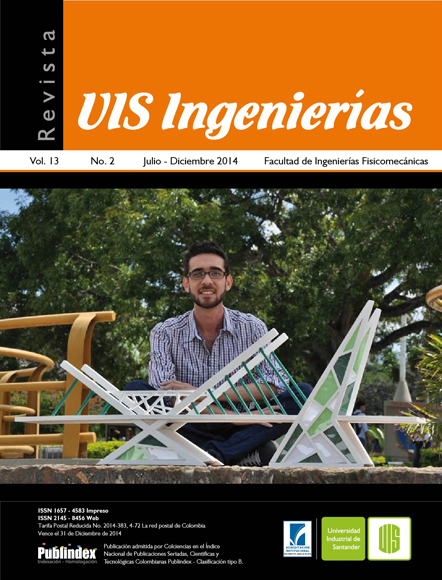Comparative study of alumina and carbon black as reinforcing fllers in natural rubber mixtures
Published 2014-03-03
Keywords
- natural rubber,
- carbon black,
- nano alumina,
- micro alumina,
- vulcanization
How to Cite
Abstract
The formulation of compounds of rubbers is the art and science of selecting and combining rubber and additives in order to produce a compound with the chemical, physical and mechanical properties required in the fnished product and to make possible easier processing conditions.
Rubber formulations generally involve different compounds, each one with a specifc function, and therefore they have an impact on the properties and processing costs of the fnal product. These compounds can be classifed in the following categories: polymers (natural or synthetic rubber), vulcanization system (vulcanizing agents, accelerator, activator or inhibitor), fllers (reinforcing or not reinforcing), antidegradant (antioxidant, antiozonant), lubricants and extenders, pigments and other special additives.
In this work, the addition of carbon black and alumina (Al2O3) as reinforcing fllers in natural rubber, was investigated.
Rheological, mechanical and morphological properties were evaluated by using a vulcanization reometer, a Shore A durometer, a Universal Testing Machine and optical microscopy techniques. The results showed that both fllers had an effect mainly on tensile strength, hardness and viscosity.
The article aims to contribute to the rubber industry once they require knowing the effects generated by the participation of black fllers and white fller for natural rubber composites
Downloads
References
- ANSARIFAR, A., Shiah, S. F., & Bennett, M. (2006). Optimising the chemical bonding between silanised silica nanofiller and natural rubber and assessing its effects on the properties of the rubber. International Journal of Adhesion and Adhesives, 26(6), 454–463. doi:10.1016/j.ijadhadh.2005.06.008
- BHATTACHARYA, M; BHOWMICK, K. (2010). Analysis of wear characteristics of natural rubber nanocomposites. Wear, 269(1-2), 152–166. doi:10.1016/j.wear.2010.03.022
- BITINIS, N. et al., (2012). Physicochemical properties of organoclay filled polylactic acid/natural rubber blend bionanocomposites. Composites Science and Technology, 72(2), 305–313. doi:10.1016/j. compscitech.2011.11.018
- BOKOBZA, L; CHAUVIN, J.-P. (2005). Reinforcement of natural rubber: use of in situ generated silicas and nanofibres of sepiolite. Polymer, 46(12), 4144–4151. doi:10.1016/j.polymer.2005.02.048
- DE GREIFF, M; HERNANDEZ, A; CASTAÑO, N. (2001). Diplomatura en tecnología del caucho. Medellín, Colombia.
- FAN, Q. et al., (2014). Investigation of dynamic characteristics of nano-size calcium carbonate added in natural rubber vulcanizate. Composites Part B: Engineering, 60, 561–567. doi:10.1016/j. compositesb.2014.01.010
- FISCHER, H; (2003). Polymer nanocomposites: from fundamental research to specific applications. Materials Science and Engineering: C, 23(6-8), 763– 772. doi:10.1016/j.msec.2003.09.148
- GACITA, W., ALDO, A; ZHANG, J. (2005). Polymer nanocomposites: synthetic and natural fillers. Ciencia Y Tecnologia, 7(3), 159–178.
- HAKIM, N; ISMAIL, H. (2008). The Comparison of Organoclay with Respect to Silica on Properties of Natural Rubber Nanocomposites. Journal of Reinforced Plastics and Composites, 28(12), 1417–1431. doi:10.1177/0731684408089504
- HERNÁNDEZ, M., Bernal, M. D. M., Verdejo, R. (2012). Overall performance of natural rubber/graphene nanocomposites. Composites Science and Technology, 73, 40–46. doi:10.1016/j.compscitech.2012.08.012
- IDRUS, S; ISMAIL, H; PALANIANDY, S. (2011). Study of the effect of different shapes of ultrafine silica as fillers in natural rubber compounds. Polymer Testing, 30(2), 251–259. doi:10.1016/j. polymertesting.2010.10.002
- CARRETERO, J; VERDEJO, R; ARROYO, M M. Á. L. M. (2009). Nuevos avances en el desarrollo de nanocompuestos elastoméricos. Latinoamericana de Metalurgia Y Materiales, 1, 33–34. KOHJIYA, S; KATO, A; IKEDA, Y. (2008). Visualization of nanostructure of soft matter by 3D-TEM: Nanoparticles in a natural rubber matrix. Progress in Polymer Science, 33(10), 979–997. doi:10.1016/j.progpolymsci.2008.06.001
- KONAR, B; ROY, K; PARIYA, K. (2010). Study on the Effect of Nano and Active Particles of Alumina on Natural Rubber–Alumina Composites in the Presence of Epoxidized Natural Rubber as Compatibilizer. Journal of Macromolecular Science, Part A, 47(5), 416–422. doi:10.1080/10601321003659531
- MOHAMAD, N. et al., (2010). Correlation of Filler Loading and Silane Coupling Agent on the Physical Characteristics of Epoxidized Natural Rubber-Alumina Nanoparticles Composites. Journal of Elastomers and Plastics, 42(4), 331–346. doi:10.1177/0095244310368125
- MOHAMAD, N. et al., (2009). Epoxidised natural rubber-alumina nanoparticle composites: effect of filler loading on the tensile properties. Solid State Science and Technology, 17(2), 133–143. Nanocomposites a Global Market Report. (2012). Tomado de http://www.strategyr.com/Nanocomposites_ Market_Report.asp
- PAUCA, A. et al., (2010). Síntesis y caracterización de alúmina nanométrica. Boletín de Ciencias de La Tierra, (28), 51–60.
- PFAENDNER, R. (2010). Nanocomposites: Industrial opportunity or challenge? Polymer Degradation and Stability, 95(3), 369–373. doi:10.1016/j. polymdegradstab.2009.11.019
- POLYMER nanocomposites drive opportunities in the automotive sector. (2012). Retrieved from http://www. nanowerk.com/spotlight/spotid=23934.php
- RAMORINO, G., Bignotti, F., Pandini, S., & Riccò, T. (2009). Mechanical reinforcement in natural rubber/ organoclay nanocomposites. Composites Science and Technology, 69(7-8), 1206–1211. doi:10.1016/j. compscitech.2009.02.023
- RAMOS DEL VALLE, F; SANCHEZ, S. (2003). Vulcanización y formulación de hules. (G. noriega Editores, Ed.) (p. 148). México, DF.
- RATTANASOM, N; PRASERTSRI, S. (2012). Mechanical properties, gas permeability and cut growth behaviour of natural rubber vulcanizates: Influence of clay types and clay/carbon black ratios. Polymer Testing, 31(5), 645–653. doi:10.1016/j. polymertesting.2012.04.001
- REZENDE, A. (2010). Natural rubber-clay nanocomposites: Mechanical and structural properties. Polymer, 51(16), 3644–3652. doi:10.1016/j. polymer.2010.06.026
- VILLEGAS, A. et al., (2007). Comparación de la resistencia a la flexión entre una matriz de alumina nanométrica reforzada con un material amorfo tipo
- LA2O3.AL2O3.3SiO2 con un producto dental de óxido de aluminio infiltrado. Scientia et Technica, XIII, 419– 424.
- VILLEGAS, P; TAYLOR, V; ARANGO, S. (2014). Caracterización biológica y mecánica de α - alumina nano y micrométrica como material potencial para reconstrucción de tejido oseo., 1–14.

